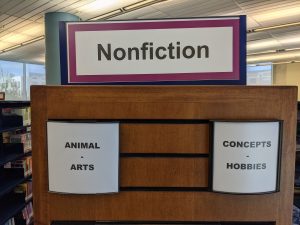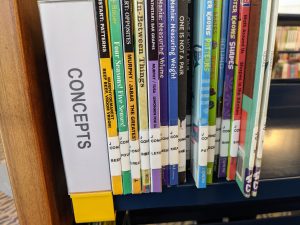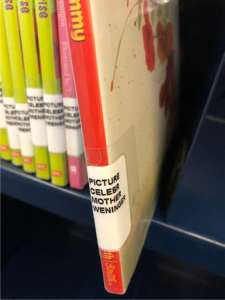By FPL_ElizabethC
I have a confession to make. I’ve been working in libraries as a student assistant or employee for about 30 years; I earned a master’s degree in Library Science 18 years ago; and I’ve worked as a librarian at the Frisco Library for more than 17 years, where I currently manage the cataloging and classification of materials in the collection. But despite all that, I do not have the entire Dewey Decimal system memorized.
I’ll give you a moment to recover from the shock.
Feeling better? Good.
Because here’s the really shocking thing: I don’t need to memorize the Dewey Decimal system – and neither do you!
The Dewey Decimal system is a way to organize information so it can be found and used when needed. But it’s not the only way to do it. Most American colleges and universities use the Library of Congress classification system. Indian mathematician S.R. Ranganathan, opens a new window developed the Colon Classification system after being appointed the first librarian of the University of Madras.
What all these systems have in common is that they convert the subject of the book (or other resource) into a code – generally a string of numbers and/or letters – that’s used to organize the books on the shelves by subject.
Here’s the problem with all those systems: people who want to find a book in the library must use the code. And for the code to make sense, people must learn about the code system. But most people don’t come to the library to learn about how the library is organized. They come to learn about whatever it is they want to learn.
For example, suppose I wanted to read about… the construction of library buildings, to choose a random example. I’d have to use the words ‘construction or building and library’ to search for a book in the catalog. Then the catalog would tell me to go to the 693 area of the collection. Why 693?
I wouldn’t know unless I also learned enough about how the Dewey Decimal system works to understand that the 600s are books on technology, the 690s about construction of buildings, and the 693s for “construction in specific types of materials and for specific purposes.”
But what if we could skip the code and work directly from where we started -- with words? We can!
Following in the footsteps of such innovative library systems as Anythink (Colorado) and Maricopa County (Arizona), we’re converting our nonfiction collections to a word-based organizational system.
The nonfiction collections will be divided into subject-based neighborhoods like animals, history, and technology. Larger neighborhoods will include subdivisions. For example, the juvenile science neighborhood has subdivisions for chemistry, earth, projects, and space, among others.
Like bookstores, we use signage with words to help you find the general area you want. And like libraries, books will still have spine labels to help locate specific titles. The difference is that the spine labels use words instead of a code.
This system has a long history of making it easier and faster for library users to find what they’re looking for – and that’s the point. We want to save your time (so you can spend more of it reading).
We’re excited to be in the process of making history with this innovative change. We hope you’ll come visit the library, see it for yourself, and (of course) check out a few books soon. Welcome to our neighborhood(s)!





Add a comment to: Good-bye Dewey, Hello Neighborhoods!